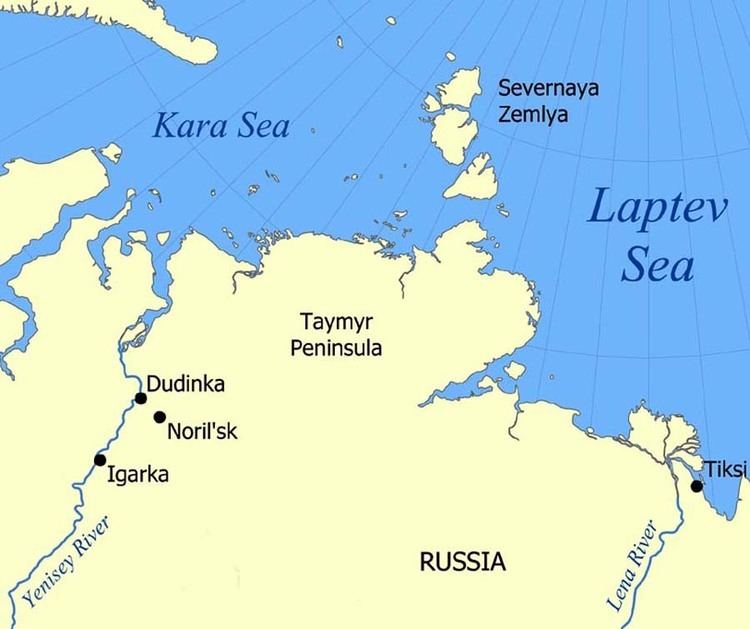The Taymyr Peninsula (Russian: Полуостров Таймыр, Таймырский полуостров) is a peninsula in the Far North of Russia, in the Siberian Federal District, that forms the northernmost part of the mainland of Eurasia. Administratively it is part of the Krasnoyarsk Krai Federal subject of Russia.
The Taymyr Peninsula lies between the Yenisei Gulf of the Kara Sea and the Khatanga Gulf of the Laptev Sea.
Lake Taymyr and the Byrranga Mountains are located within the vast Taymyr Peninsula.
Cape Chelyuskin, the northernmost point of the Eurasian continent, is located at the northern end of the Taymyr Peninsula.
The Nenets people, also known as Samoyeds, are an indigenous people in northern arctic Russia, and some live at the Taymyr Peninsula.
The Nganasan people are an indigenous Samoyedic people inhabiting central Siberia, including the Taymyr Peninsula. In the Russian Federation, they are recognized as being one of the Indigenous peoples of the Russian North. They reside primarily in the settlements of Ust-Avam, Volachanka, and Novaya in the Taymyrsky Dolgano-Nenetsky District of Krasnoyarsk Krai, with smaller populations residing in the towns of Dudinka and Norilsk as well.[1][full citation needed] The isolated location of the Nganasan people enabled them to maintain shamanistic practices even in the 20th century.[2]
